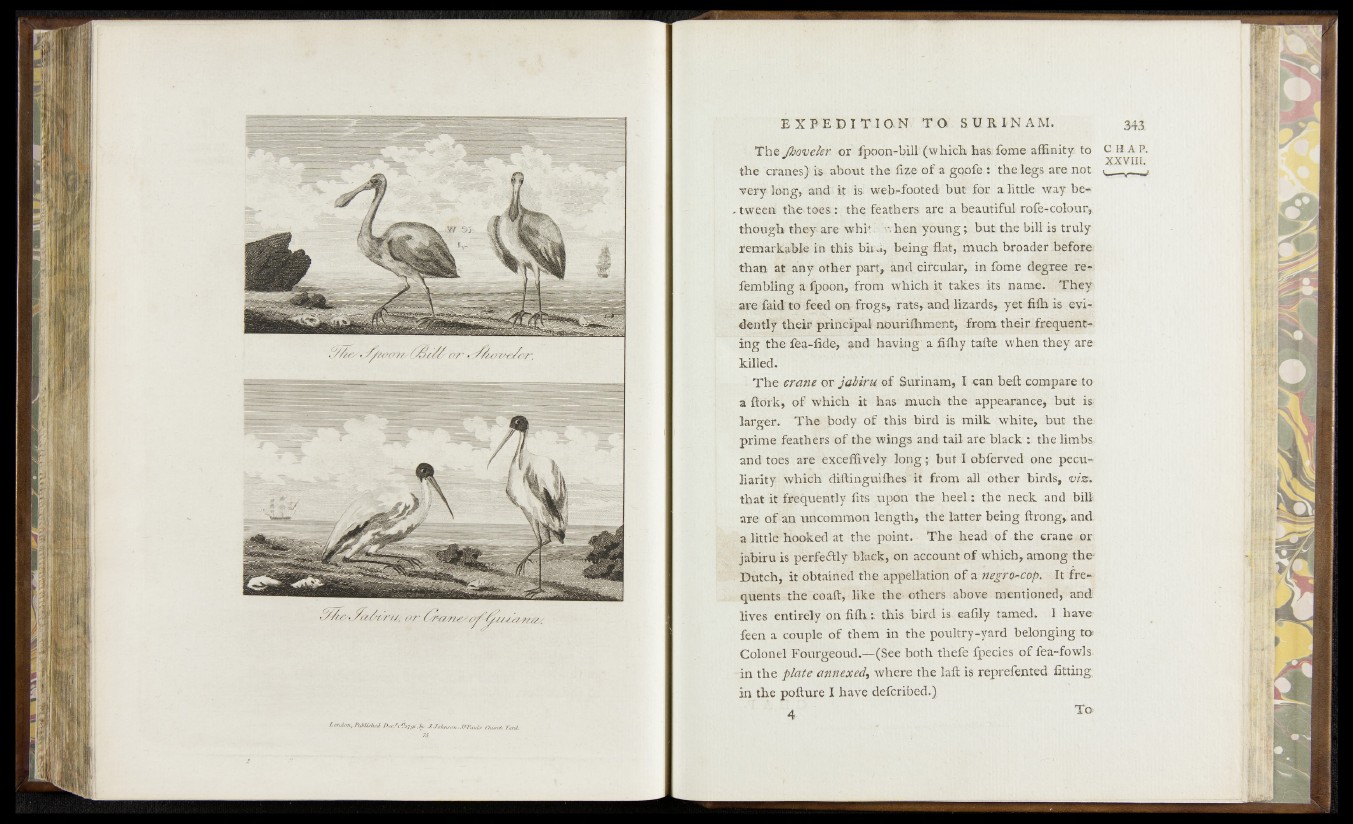
T\\& jfttQ’vehr. or Ipoon-bill- (which has; feme affinity to
the cranes^;^ about the- fi?p ©f a gqofe; 1 the.Iegs are. not
i j i j i s f a . little way be-
tweeas the.toes:, the feather agre kbeautiful rofe-rcolour,.
though thesy are whit when young * but the biH' is truly
remarkable in this bir«i, being flat, much broader before
tha® at any other parh knd.cifciilarj in fome degree re-
fembling a^oon, fro in which it takeseits name. They
are laid' to feed on frogs* rats, and lizards, yet ftfh. i s . evidently
their princi|»i nouri^naenc, from theirTfiei^ent-
ing the fea-fide, and having-a fifhy tafte when they are
killed.
The crane ®£. jabwu Q& Surinam, I -can heft compare to
a ftbrki, o f >’&as-‘. ttwacifc -'Ihe appeajianee, but is
larger. Thobody of this bird is milk whiter bdf the:
prime feathers -of the wings and tail are black :. the limbs?
and toes- .aa^exbefl&vely • long; but I obferved one pecu^
Harityi^hidh dMhnguifhe#it from all other birds, v iz,
that fits upon the beek: the neck and hill
are of an -uncommon length, the fetter being ftrong, and.
a littl#hooked at the .point. • The head lof the crane or
jabrru is perfe^ly hfeek, on account o f which, among tho
Dutch, it obtained the. appellation Of a mgrfr-cop. 11 frequents
the coaft, like the- others above mentioned, and(
lives entirely on fifh.t this bird. is. eafily tamed. 1 have,
feen a couple of them in the poultry-yard .belonging to*
Colonel Fourgeo ud .^-(See both thefe fpecids of fea-fowls,
in the plate annexed, where the laft is reprefented. fitting;
in the pofture 1 have defcribed.}.
4 To